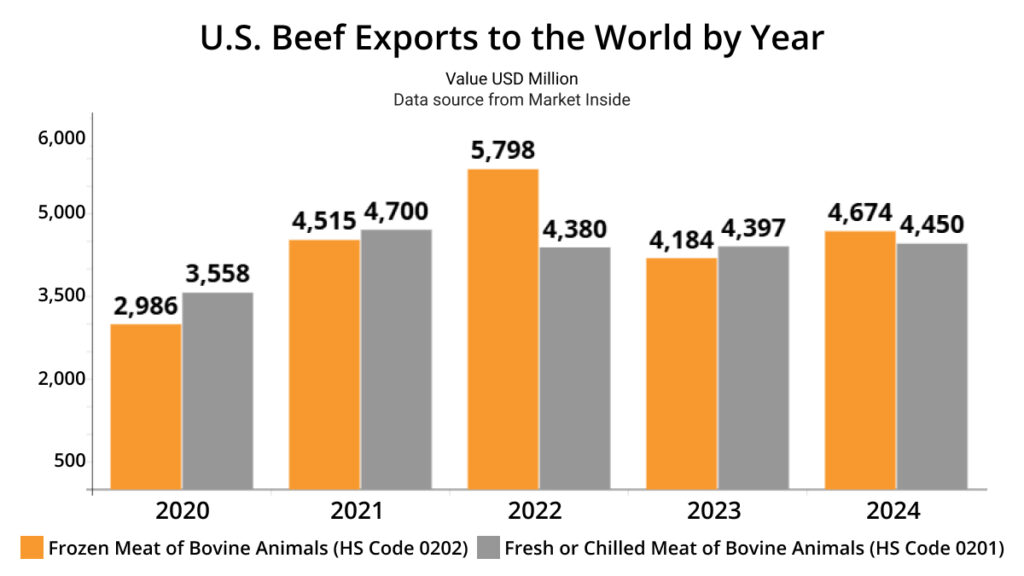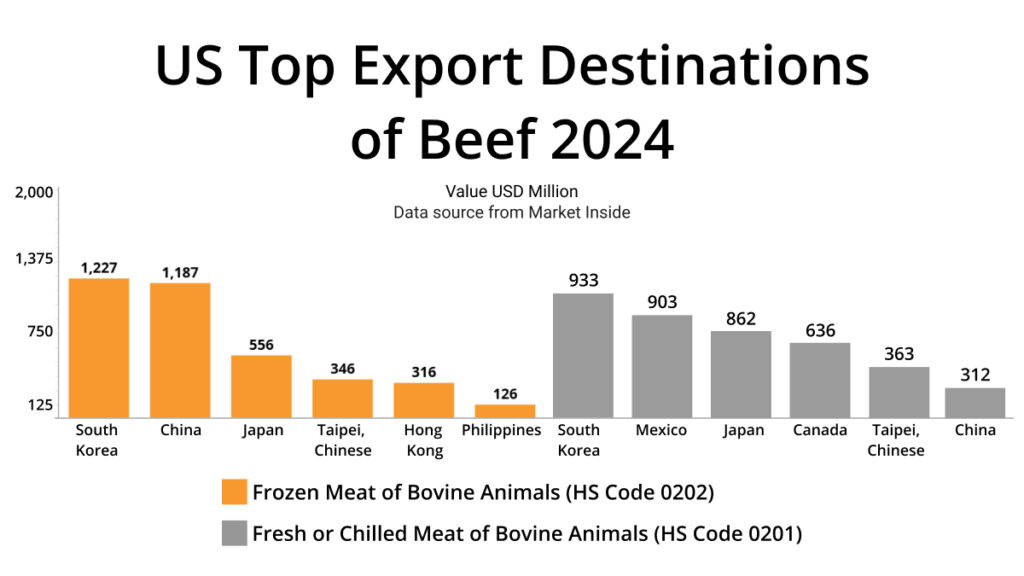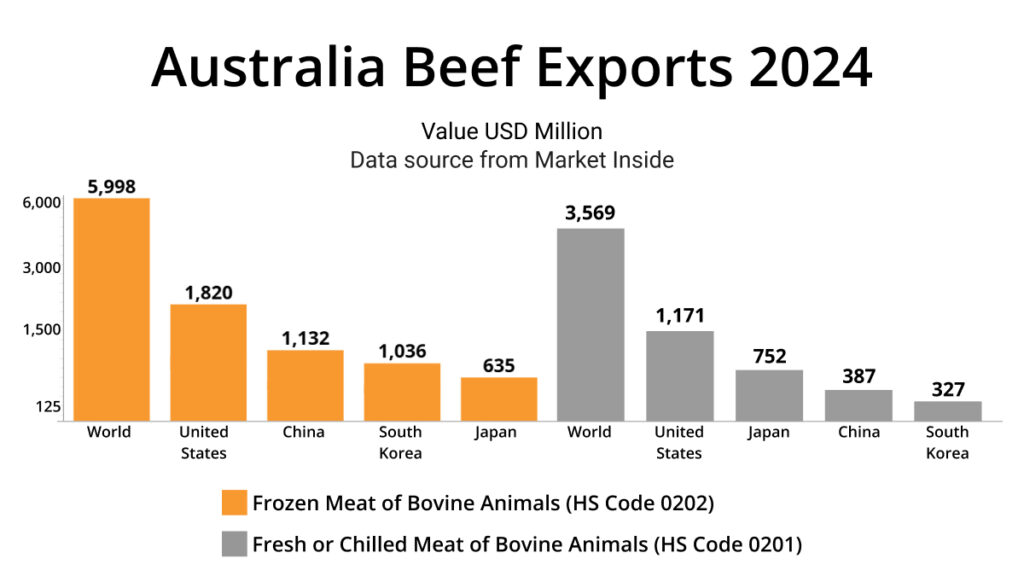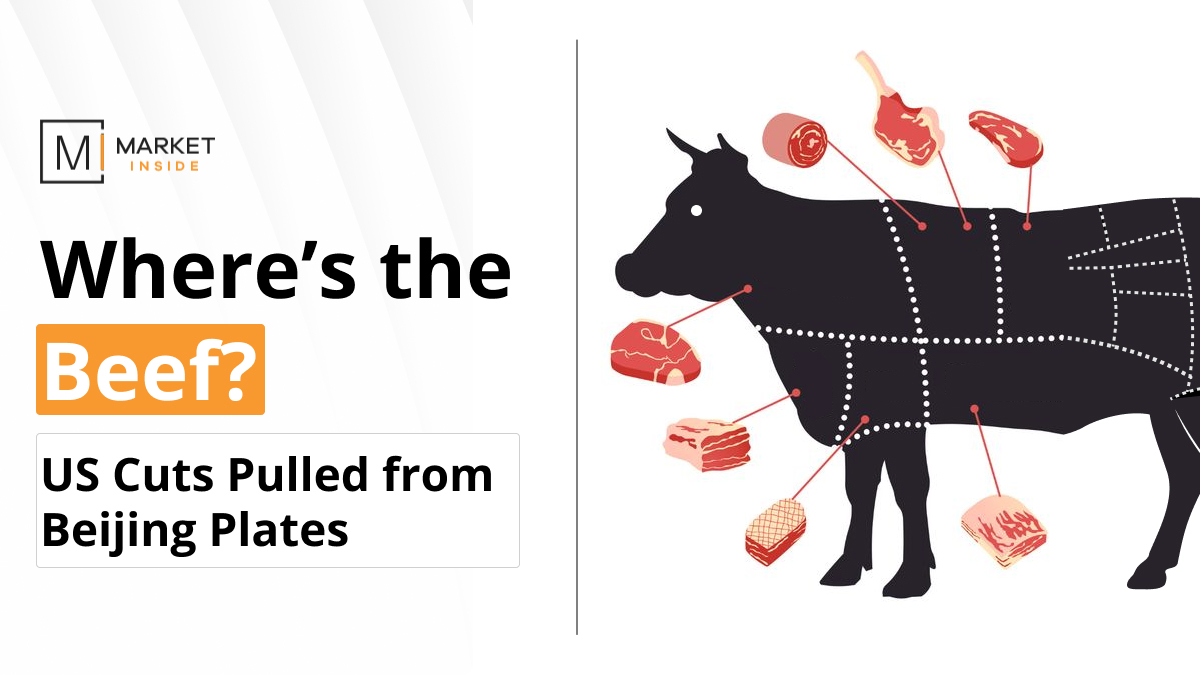As the U.S.-China trade war simmers into its latest chapter, the fallout is now being felt on dinner plates across Beijing. American-style restaurants in the Chinese capital quietly remove U.S. beef from their menus, citing rising tariffs, supply disruptions, and growing uncertainty in the import market. Once a staple of upscale dining and Western-themed eateries, U.S. beef is becoming harder to find, both for chefs and the customers who crave it. How much beef does the US export to China and other countries? Will Australia fulfil China’s demand for beef? Everything is explained with crucial US beef export data in this article.
The US-China trade war means American beef, once the star ingredient, will soon be off the table. American beef is one of thousands of casualties in the trade war between the world’s largest trading partners. Even before the battle began, US beef was expensive. Beijing’s 125% retaliatory tariffs, on top of the existing 22%, made it unaffordable. While the $125 million a month in U.S. beef exports to China is a silver lining of the mammoth goods trade, beef’s disappearance from menus in Beijing is a glimpse of the fate to come for thousands of commodities on both sides of the Pacific.
Yearly trends of U.S. beef exports to the world
U.S. beef exports have experienced significant growth over the past two decades, reflecting both increased global demand and the industry’s ability to meet international quality standards. Here’s an overview of the yearly trends of US beef exports with stats sourced by Market Inside:

| Year | Frozen Meat of Bovine Animals (HS Code 0202) | Fresh or Chilled Meat of Bovine Animals (HS Code 0201) |
| 2020 | 2,986 | 3,558 |
| 2021 | 4,515 | 4,700 |
| 2022 | 5,798 | 4,380 |
| 2023 | 4,184 | 4,397 |
| 2024 | 4,674 | 4,450 |
*****Value USD Million
US Top Export Destinations of Beef 2024
As global demand for high-quality beef continues to grow, the United States remains a dominant player in the international meat trade. According to US export data of beef, in 2024, U.S. beef exports are thriving, with key markets like Japan, South Korea, and Mexico leading the way.

| Export Destination | Frozen Meat of Bovine Animals (HS Code 0202) | Export Destination | Fresh or Chilled Meat of Bovine Animals (HS Code 0201) |
| South Korea | 1,227 | South Korea | 933 |
| China | 1,187 | Mexico | 903 |
| Japan | 556 | Japan | 862 |
| Taipei, Chinese | 346 | Canada | 636 |
| Hong Kong | 316 | Taipei, Chinese | 363 |
| Philippines | 126 | China | 312 |
*****Value USD Million
China to import more Australian beef – how much beef does Australia export to the world
In 2024, China began favoring Australian beef over U.S. imports, influenced by U.S. trade policies and China’s evolving market dynamics. This shift aligns with Australia’s strategic efforts to enhance its beef export presence in Asia. Australia’s export data of beef showcases a list of countries that import Australian beef.

| Export Destination | Frozen Meat of Bovine Animals (HS Code 0202) | Export Destination | Fresh or Chilled Meat of Bovine Animals (HS Code 0201) |
| World | 5,998 | World | 3,569 |
| United States | 1,820 | United States | 1,171 |
| China | 1,132 | Japan | 752 |
| South Korea | 1,036 | China | 387 |
| Japan | 635 | South Korea | 327 |
*****Value USD Million
The Bottom Line
As the trade war between the U.S. and China continues to reshape the landscape of international commerce, Beijing’s American-style restaurants are feeling the impact firsthand. With U.S. beef disappearing from menus due to rising tariffs and supply disruptions, local alternatives are taking center stage.
This shift not only affects the dining preferences of consumers but also highlights the broader implications of global trade tensions on the food industry. As the situation evolves, it remains to be seen how long-term these changes will be and whether the U.S. can reclaim its place as a key beef supplier in China’s competitive market. Keep following Market Inside to access global trade data with actual shipment records.




